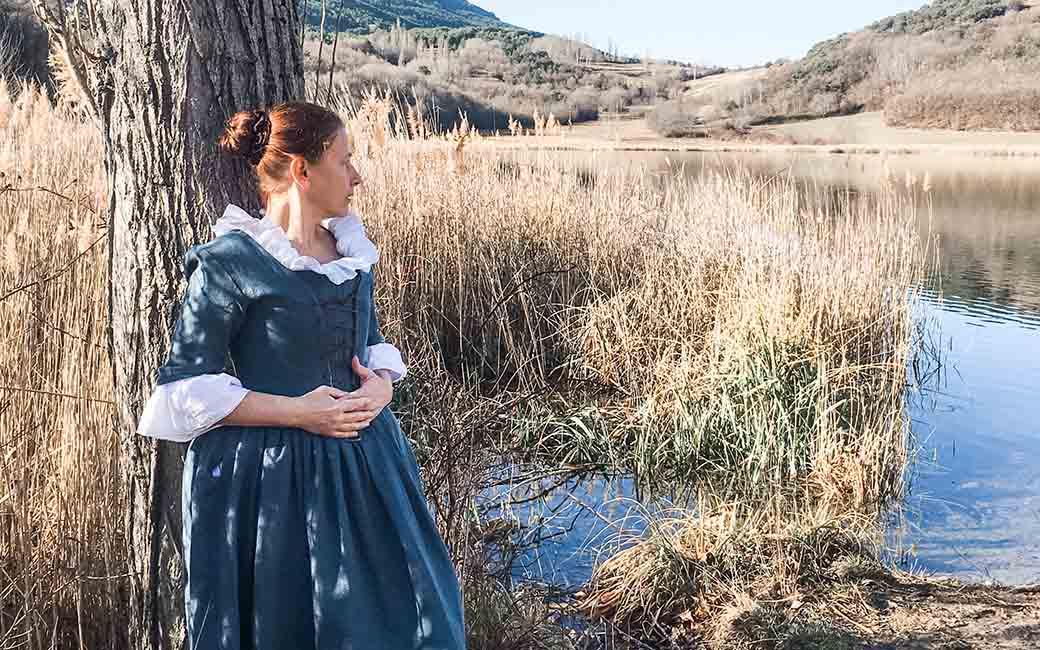Embracing Slow Fashion at Atelier Serraspina
At Atelier Serraspina, our philosophy is deeply rooted in the principles of Slow Fashion, especially when it comes to crafting costumes. Slow Fashion isn't just a trend—it's a conscientious approach to fashion that emphasizes thoughtful consideration of the production processes and the resources needed to create garments. This movement champions enduring, high-quality designs over fleeting fashion fads that are discarded after minimal use. In essence, Slow Fashion stands in stark contrast to the disposable nature of fast fashion.

The ethos of Slow Fashion advocates for the purchase of superior-quality garments designed to withstand the test of time. This approach signals a pivotal shift from the prevailing fast fashion paradigm, which revolves around the mass-production of inexpensive, ephemeral clothing designed to keep pace with the latest trends. Slow Fashion harkens back to a time before the fast fashion explosion, urging consumers to buy less but invest in better quality. It envisions clothing as a durable asset to be cherished, not as a mere disposable item.
In marked contrast to the fast-paced, overconsumption-driven, and wasteful practices of fast fashion, Slow Fashion upholds the values of exceptional quality, artisanal craftsmanship, sustainable preservation, and the potential for renewal in both the production and consumption of apparel. The overarching aim is to decelerate the frenetic pace of fashion production and consumption, thereby mitigating waste, curbing pollution, and combatting the unethical labor practices that are rampant within the fast fashion industry.
At Atelier Serraspina, we specialize in crafting garments that are not only historically accurate but are also imbued with a philosophy of longevity in clothing creation. Our costumes are designed for historical reenactments, theatrical performances, and those who appreciate the timeless elegance of a garment that transcends generations. We create dresses and costumes with the intention that they will last a lifetime, becoming cherished heirlooms that you can pass down to your daughters and granddaughters—pieces that embody durability, beauty, and a legacy of craftsmanship.

History of Slow Fashion
The slow fashion movement emerged in response to the rise of fast fashion in the late 20th century. As clothing production became faster and cheaper, the amount of clothing purchased increased dramatically. By the 1990s, fast fashion retailers were changing collections every 2 weeks, and the era of cheap, disposable clothing took hold.
Some trace the origins of slow fashion back to the Arts and Crafts movement of the late 19th century, which emphasized traditional craftsmanship and simple forms. However, the modern slow fashion movement really started to take shape in the 2000s.
In 2007, the slow fashion concept was articulated by Kate Fletcher as part of the Slow Movement, which emphasizes slowing down life's pace. Fletcher described slow fashion as involving "long-lasting quality, aesthetic appeal, and factoring in sustainable and ethical impacts."
Popular documentaries like The True Cost (2015) exposed the ugly underbelly of fast fashion and its impacts. More consumers started seeking out eco-conscious brands that produced less and focused on quality.
Pioneering slow fashion companies like Eileen Fisher and Patagonia promoted keeping clothes longer and repairing when possible. Startups like Everlane and Reformation built their models around radical transparency and ethical production. A new wave of conscious consumers fueled the growth of slow fashion.
While the movement started small, it has rapidly gained mainstream momentum. According to McKinsey research, the secondhand clothing market is projected to grow to 1.5 times the size of fast fashion by 2028. As awareness of fashion's impacts spreads, more consumers are embracing the slow fashion ethos.

Principles of Slow Fashion
At Atelier Serraspina, we are deeply committed to the principles of slow fashion, ensuring that our production of historical outfits and dresses is both ethical and sustainable. Embracing natural materials and traditional craftsmanship, we believe in creating timeless pieces that honor the past while respecting the future.
The slow fashion movement advocates for a transformative approach to the fashion industry, promoting practices that prioritize the well-being of people and the environment. Below are the fundamental principles and practices that guide our work at Atelier Serraspina:
Focus on Quality Over Quantity - Slow fashion values quality over quantity, favoring timeless, well-made pieces over cheaply made fast fashion. The goal is to buy less but better, investing in garments made to last through years. This reduces waste and the pressure to constantly buy the latest trends.
Ethical and Sustainable Practices - From materials to manufacturing, slow fashion opts for ethical and sustainable choices that are gentler on the environment. This means using eco-friendly textiles like organic cotton, linen, or recycled materials, along with fair trade and safe working conditions.
Artisanship - Slow fashion celebrates the artistry and craftsmanship in clothing, often partnering with small-scale designers, brands and seamstresses. Valuing the time, skills and vision behind each garment.

By shifting perspective from quantity and speed to quality and sustainability, we also contribute to provide an alternative model to fast fashion's wastefulness and exploitation. The focus is on caring for people, craft, and the planet.
The Future of Slow Fashion
The slow fashion movement has rapidly gained momentum in recent years as more consumers become aware of the enormous environmental and social impact of fast fashion. While still a niche, the market for sustainable and ethical fashion grew five times faster than conventional fashion from 2016-2018. With young generations leading the charge, slow fashion is poised to continue growing exponentially.
Many industry experts predict the slow fashion market could triple in size within the next 5-10 years. As demand increases, more sustainable innovations, technologies and materials will emerge. For instance, companies are developing new biodegradable and plant-based textiles made from oranges, grapes and algae to replace environment-polluting synthetics. Digital technologies can also help track supply chains and clothing lifecycles to minimize waste.
Slow fashion brands have an opportunity to gradually take more shelf space at mainstream retailers. As offerings expand beyond niche e-commerce sites, the principles of durability, natural materials and ethical production can spread. Even some large fast fashion companies are starting to develop their own sustainable collections and supply chains, acknowledging consumer demand.





